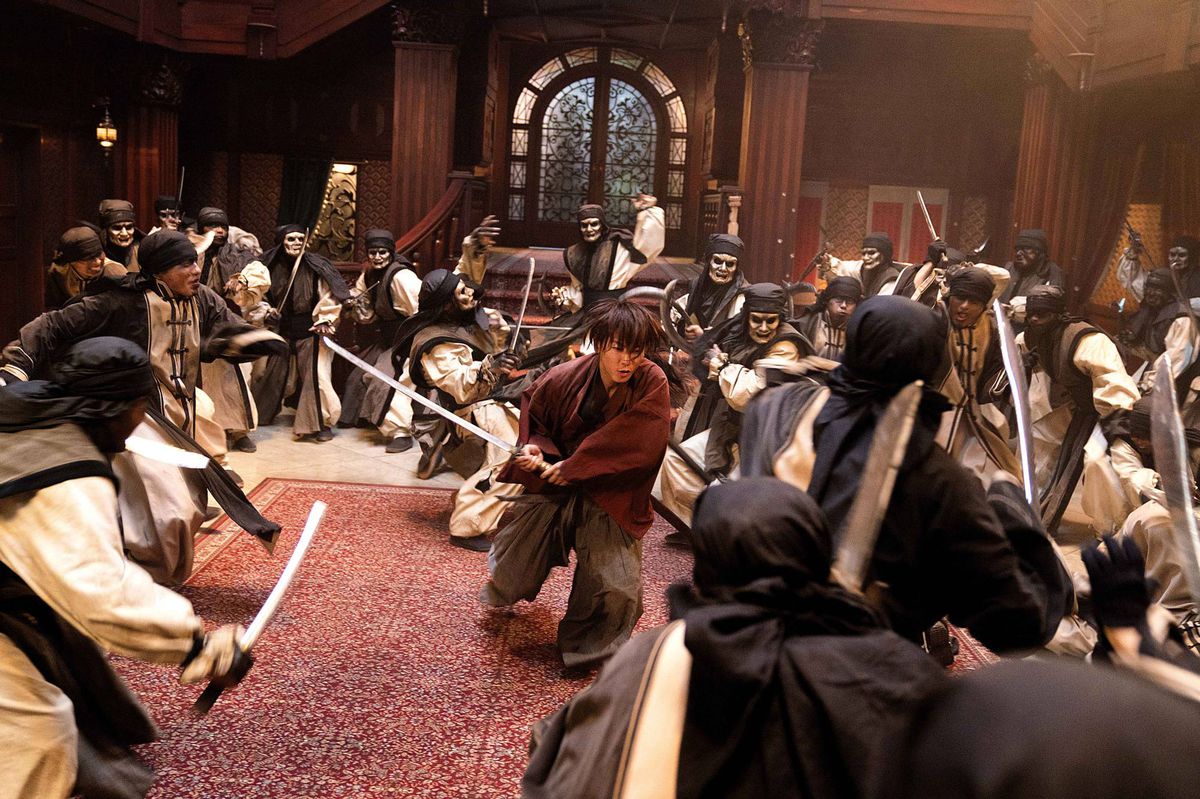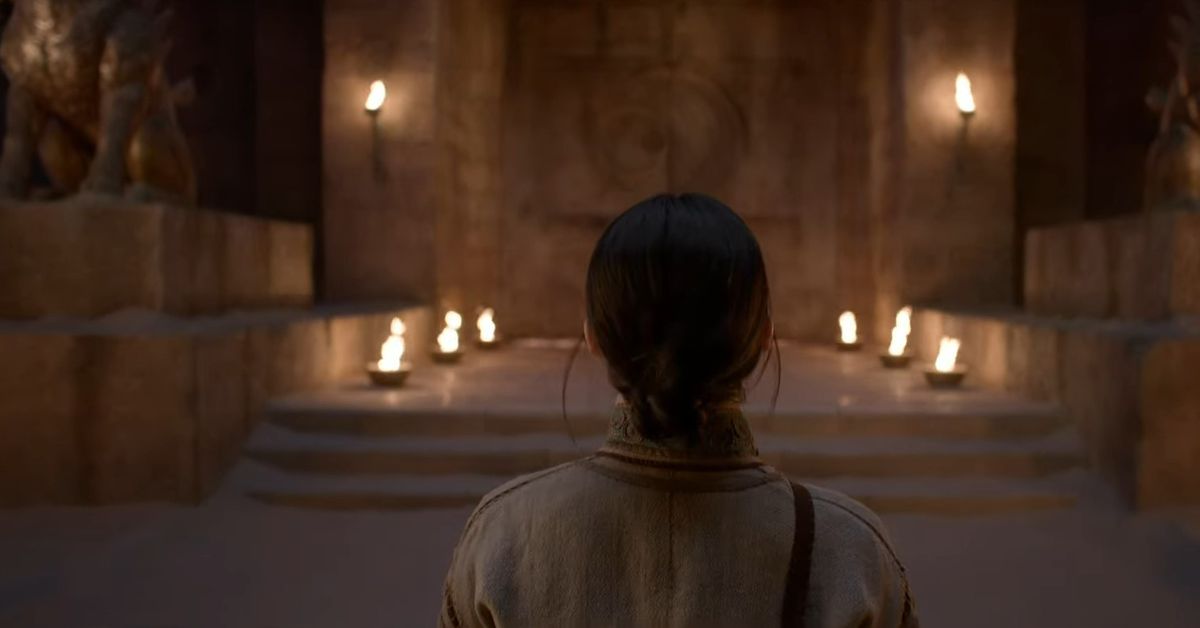Zack Snyder is no stranger to remixing past pop history. From rewiring zombie tropes to dimensionalizing comic book drawings to bringing DC’s Justice League to the screen for the first time, the man loves playing in other people’s sandboxes. So what was the draw of carving out his own bespoke universe with Rebel Moon, his new Netflix franchise-starter?
“I was looking for something that was really pushing the sci-fi fantasy elements to their extreme,” Snyder tells Polygon. “I think that sci-fi fantasy, at its highest level, is like the ultimate genre. You can’t go any more genre than sci-fi fantasy. You hit your head on the roof of genre when you go to that one. And so that was really what I was hoping for, to give this kind of deep genre cinema experience that can only be obtained when going to this level.”
In that way, Rebel Moon feels more like Snyder’s Sucker Punch than his stricter adaptations. The galaxy-bound drama is wall-to-wall images and influences, from its core as a riff on Akira Kurosawa’s classic movie Seven Samurai to its obvious roots as an abandoned Star Wars pitch. But where Sucker Punch is driven by grimy, adolescent impulses, Rebel Moon feels like a solar system spun together by an older filmmaker who has spent time on the development grind. The film’s hero, Kora (Sofia Boutella), zips around the galaxy on a quest to find fighters who can protect her homeworld, and each planet she arrives on feels like a different Snyder movie.
This is not a coincidence, according to the director. Unlike, say, George R.R. Martin, who seems to lay world-building bricks for years before actually writing his fantasy stories, Snyder and his cohorts established the universe of Rebel Moon by throwing out tons of visual ideas and allowing character arcs and emotional value to expand them into cinematic moments.
Partway through the first Rebel Moon movie, A Child of Fire, Kora and her rogue party meet Nemesis (Doona Bae), a sword fighter in Vampire Hunter D threads, on a mission to free a kidnapped child from the clutches of Harmada, a spider-woman hybrid who just wants to be a good mommy. Snyder says the idea was to originally have the creature just be a full-blown talking spider, but to create conflict in what would ultimately be a sword fight, he wanted the audience to feel the arachnid’s motherly desires. So he called his old friend and Sucker Punch star Jena Malone.
:no_upscale()/cdn.vox-cdn.com/uploads/chorus_asset/file/25171195/jena_malone_spider_rebel_moon.jpg)
“I was like, ‘Jenna, can you do this spider character? Because I really want them to be sympathetic.’ She is the only person I know that can be tough and sympathetic at the same time. She was like, ‘OK, sounds cool.’” The dream required special makeup effects and puppet designer Justin Raleigh to design a rig that makes Malone look like a Borg Queen version of the Scorpion King, in a good way. “It was an evolution of sorts, satisfying the needs of the scene.”
There are scenes in Rebel Moon that are literally bits from other movies Snyder intended to make. Toward the end of his relationship with Warner Bros. Pictures, before Justice League and the “Snyder Cut” maelstrom saw him depart for Netflix, the filmmaker worked on a potential sequel to 300 called Blood and Ashes. Described by Snyder as an “incredibly homoerotic, super-violent, super-sexual movie,” the film would have chronicled the relationship between Alexander the Great and his second-in-command general, Hephaestion, as they enacted brutal campaigns around the world. It’s unclear whether that film will ever get made — with basically zero ties to Frank Miller’s 300 comic, the rights to the script recently reverted back to Snyder — but some of it wound up in Rebel Moon.
“I wrote this scene in which Alexander has to ride Bucephalus, or rather break Bucephalus, the horse that he had almost his entire career. And I was kind of obsessed with that.” Snyder says as he was conceiving action for Kora on the various planets, he kept returning to the sequence, which would play perfectly for Tarak (Staz Nair), a warrior working off a debt on a desert ranch. But in this case, Bucephalus would be a griffin. “So when I went into the Tarak scene, I was like, He should break this black animal. He rides it, and through that, we’ll see his power and his strength.”
:no_upscale()/cdn.vox-cdn.com/uploads/chorus_asset/file/25171199/RBM_20220420_02636_R2.jpg)
Snyder, like so many of his generation, is in constant dialogue with the pivotal movies and influences of his past. And while Rebel Moon doesn’t have a ton of Star Wars DNA in its final form, it’s no surprise we get a cantina scene. Even if Snyder is hitting the roof of genre with his sci-fi fantasy escapade, there was bound to be a cantina scene. But he’s doing it the Snyder way.
“It was fun, because our cantina is a brothel,” he says with a self-aware laugh. “So it’s already slightly off from normal iconography that you would expect from a space bar scene. And I think that gave us a lot of freedom, and we all felt really creative within that space. […] It also allowed us this freedom to have this amazing cast of characters that we knew were sex workers, so they seemed really jaded and not 100% into it.”
Turns out, a cantina scene is a great place to dump dialogue that pushes the story forward, according to Snyder. When Kora arrives at the space brothel, she’s looking for information on where to find the once-renowned military commander Titus (Djimon Hounsou). She gets what she needs from an unlikely patron: a glowing blue bug who can only vocalize psychically through the slobbering human victim wrapped up in its tentacles. This is why Snyder made a sci-fi fantasy movie.
“That made the exposition fun to reveal,” Snyder says. “You get a bug to do it, so it’s cooler.”
Rebel Moon Part One: A Child of Fire debuts on Netflix on Dec. 21.








